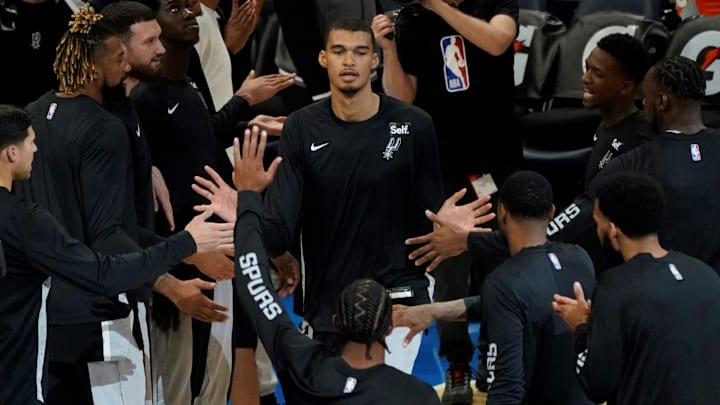2.) Improvements to a historically poor defense
Admittedly, this is a mighty low bar. Saying the Spurs ranked last in defensive rating last season would be an understatement, as they had the dubious honor of being the first NBA team to reach the 120 defensive rating threshold for a full-length season. Before the start of last year, the 2019 Post-LeBron Cavs held the worst defensive rating at 117.6.
Let's also not forget last year's Spurs became the first team to ever lose seven games by at least 35 points, then promptly tacked on another historic loss in a 44-point drubbing from the Boston Celtics a few days later.
So, yes, improvement will be low-hanging fruit. The Spurs’ core includes several players who’ve been reputable on defense dating back to their prospect days — Wembanyama, Vassell, Jeremy Sochan, Tre Jones, and Zach Collins, to name a few.
Gaining cohesion to ascend as a premier defensive unit will take meticulous massaging and marinating. But the foundation looks much firmer heading into this season than last, and having a 7-foot-3 behemoth to erase a handful of mistakes every game will help immediately. Sochan, in particular, should find more ways to impose his will and physicality on that end after a year of seasoning and holding his own while taking on the most challenging defensive assignments.
Things get a little less complicated when you can play extra large in the frontcourt for long stretches because one of your bigs can guard the three-point line and dig at the nail in one fell swoop.
OH MAMA WEMBANYAMA ‼️ pic.twitter.com/R1A6ufYq4B
— San Antonio Spurs (@spurs) October 10, 2023
It would not be surprising to see Wembanyama hover around the top five in blocks per game during his rookie season. He'll be allowed to roam off the burly centers Collins covers, which should let Wembanyama make an enormous impact in weakside and recovery scenarios. You might be safe to say his eight-foot wingspan will accidentally pick up a heap of deflections and blocks.
Defending the three-line is another element that seems ripe for improvement. Opponents shot a league-best 39.2% from beyond the arc last season, no doubt a result of San Antonio having to throw more bodies on the interior in an attempt to help the injury-maligned frontcourt, which saw opponents score a league-high 56.7 points in the paint per game.
Given the size boost in the frontcourt, the hope is San Antonio's perimeter defenders will quickly learn to trust their backline more and hug shooters more closely to avoid giving up the barrage of open three-pointers that contributed to many of their blowout losses last season.
Of course, even with noticeable gains in these areas, young teams will commit inevitable mental mistakes — failing to get back in transition with urgency and falling asleep on backdoor cuts. Taking pride, learning from those failures, and cutting down on those instances as the season progresses will be a critical barometer to key in on. It's easy to have faith in Coach Pop to continue persistently instilling the best tendencies over the long run.
